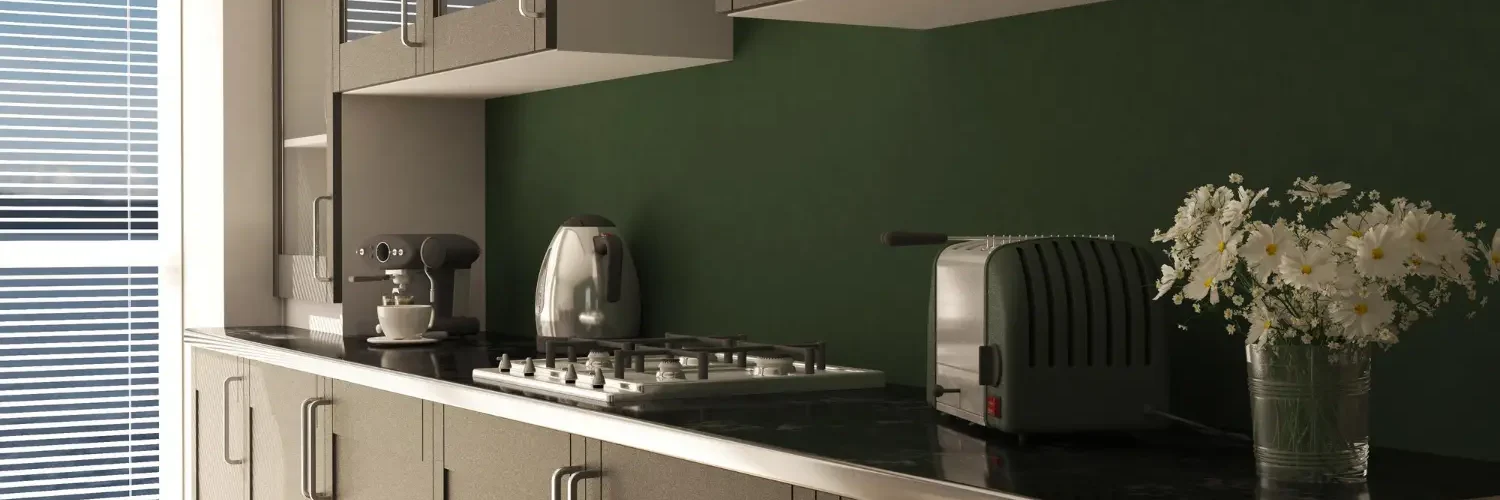Painting kitchen cabinets is an alluring way to give your kitchen a fresh new look without breaking the bank. But is it a good idea? In this comprehensive guide, we’ll delve into various aspects of painting cabinets, including color coordination, safety considerations, and expert recommendations.
Should You Paint Cabinets and Walls the Same Color?
Choosing the perfect color scheme for your kitchen can be a daunting task. While painting cabinets and walls the same color might seem like an easy solution, it’s essential to consider the visual impact. A monochromatic look can create a sense of uniformity and harmony, but it may also lack depth and visual interest. Instead, consider using complementary colors or varying shades of the same hue to add dimension and character to your kitchen.
Is It Safe to Paint Inside Kitchen Cabinets?
When it comes to painting the interiors of your kitchen cabinets, safety should be a top priority. Although most modern paints are non-toxic and safe for use on surfaces that come into contact with food, it’s essential to select an appropriate paint for the job. Opt for low-VOC (volatile organic compound) or zero-VOC paints, as they emit fewer harmful chemicals and are better for your health and the environment. Additionally, ensure proper ventilation during and after painting to minimize the risk of respiratory issues.
What Kind of Kitchen Cabinets Cannot Be Painted?
While most kitchen cabinets can be successfully painted, there are a few exceptions:
- Laminate Cabinets: Painting over laminate can be challenging, as the surface is often slick and non-porous, making it difficult for paint to adhere.
- Metal Cabinets: Metal surfaces require special preparation and paint products designed for use on metal, which may not be suitable for a DIY project.
- Heavily Damaged Cabinets: Cabinets with severe water damage, mold, or structural issues should be replaced rather than painted.
Should Wall Color Match Kitchen Cabinets?
Matching your wall color to your kitchen cabinets can create a seamless and cohesive look. However, it’s not a one-size-fits-all solution. Depending on the size and layout of your kitchen, as well as your personal design preferences, a contrasting or complementary color scheme might be more visually appealing. Ultimately, the decision boils down to your aesthetic sensibilities and the desired atmosphere for your kitchen.
Can Kitchen Cabinets and Walls Be the Same Color?
While it’s possible to paint your kitchen cabinets and walls the same color, this approach may not always yield the best results. A single color can make a small kitchen feel even more cramped or give a larger space a monotonous appearance. Experiment with different color combinations, taking into account factors such as natural light, kitchen size, and personal taste.
Do You Need to Paint Drywall Behind the Cabinets?
While it’s not strictly necessary to paint the drywall behind your kitchen cabinets, doing so can offer several benefits:
- It provides a clean, uniform appearance when cabinets are removed or replaced.
- Painting drywall behind cabinets can protect the surface from moisture, reducing the risk of mold and mildew growth.
- It allows for easier cleaning and maintenance in hard-to-reach areas.
However, if you’re pressed for time or budget, you can choose to leave the drywall behind cabinets unpainted, as it won’t be visible once the cabinets are in place.
What Type of Paint Is Recommended for Kitchen Walls?
When selecting paint for your kitchen walls, durability and washability are key factors to consider. Kitchens are prone to spills, splatters, and grease, so it’s essential to choose a paint that can withstand daily wear and tear. The following paint types are recommended for kitchen walls:
- Semi-gloss: This paint finish is easy to clean and offers a subtle shine, making it an ideal choice for kitchens.
- Satin: Satin paint provides a smooth, velvety finish with moderate washability, balancing aesthetics with practicality.
What Color Should I Paint My Kitchen Cabinets?
The color of your kitchen cabinets is a crucial design element that can dramatically impact the overall look and feel of the space. When choosing a color, consider the following factors:
- Kitchen Size: Lighter colors can make a small kitchen feel more spacious, while darker hues can add warmth and coziness to a larger area.
- Personal Taste: Your kitchen should reflect your personality and design preferences. Don’t be afraid to experiment with bold or unconventional colors if they resonate with your style.
- Existing Elements: Take into account your countertops, flooring, and appliances when selecting a cabinet color to ensure a harmonious and cohesive design.
Should Kitchen Cabinets Be Lighter or Darker Than Walls?
There’s no definitive answer to whether kitchen cabinets should be lighter or darker than walls, as it largely depends on your design goals and personal taste. Here are some general guidelines to help you decide:
- Light Cabinets, Dark Walls: This combination can create a dramatic contrast and make your cabinets stand out.
- Dark Cabinets, Light Walls: This pairing can provide an elegant, sophisticated atmosphere and help ground the space.
- Similar Tones: Opting for cabinets and walls in similar tones can create a seamless, harmonious look.
Is It Worth It to Paint Your Kitchen Cabinets?
Deciding whether or not to paint your kitchen cabinets is a personal decision that depends on various factors, such as your budget, the condition of your cabinets, and your desired aesthetic. Painting your cabinets can be a cost-effective way to update your kitchen, but consider the following:
- Time and Effort: Painting cabinets can be a time-consuming and labor-intensive process, especially if you’re doing it yourself.
- Quality: A professional paint job can yield stunning results, but a poorly executed DIY project may look amateurish and require frequent touch-ups.
- Longevity: Painted cabinets may not be as durable as factory-finished ones and may require repainting or refinishing over time.
Should I Paint the Walls Before Installing the Kitchen Cabinets?
Painting your kitchen walls before installing cabinets offers several advantages:
- Efficiency: It’s easier to paint walls without having to work around cabinets, which can save time and effort.
- Cleanliness: Painting first minimizes the risk of accidental paint drips or spills on your new cabinets.
- Comprehensive Coverage: You’ll be able to paint the entire wall surface, ensuring a uniform appearance should you decide to rearrange or replace your cabinets in the future.
While it’s not strictly necessary to paint walls before cabinet installation, doing so can streamline the process and produce a cleaner, more professional result.
Can You Paint the Walls and Cabinets the Same Color?
Yes, painting your kitchen walls and cabinets the same color can create a cohesive and harmonious look. However, this approach can also result in a monochromatic, flat appearance, depending on the color and finish used. To avoid a one-dimensional look, consider incorporating contrasting or complementary colors for your countertops, backsplash, and other elements to add depth and visual interest to your kitchen design.
Can You Use the Same Paint for Walls and Cabinets?
Although it’s possible to use the same paint for both your kitchen walls and cabinets, it’s not generally recommended. Cabinets require a more durable and easy-to-clean paint finish, such as semi-gloss or gloss, to withstand daily wear and tear. Conversely, wall paint typically has a lower sheen, such as eggshell or satin, to create a more visually appealing surface.
Using the same paint for both surfaces may compromise the appearance and durability of your kitchen design. Instead, opt for specialized paint products designed for each surface to ensure the best results.
Is It a Bad Idea to Paint Kitchen Cabinets?
Painting kitchen cabinets can be an excellent way to update your kitchen’s appearance without the expense of a full renovation. However, it’s essential to weigh the pros and cons before diving into this project:
- Pros: Cost-effective, customizable, and relatively quick compared to cabinet replacement.
- Cons: Can be labor-intensive, may not yield professional results if done incorrectly, and may require more frequent touch-ups or refinishing compared to factory-finished cabinets.
Ultimately, whether painting your kitchen cabinets is a good or bad idea depends on your goals, budget, and willingness to invest time and effort into the project.
Who Makes the Best Kitchen Cabinet Paint?
Choosing high-quality paint is crucial to achieving professional, long-lasting results for your kitchen cabinet makeover. Some of the best kitchen cabinet paint brands include:
- Benjamin Moore: Known for its premium quality and vast color selection, Benjamin Moore’s Advance line is specifically designed for cabinetry.
- Sherwin-Williams: Their ProClassic line offers exceptional durability and a smooth, even finish, making it an excellent choice for kitchen cabinets.
- Farrow & Ball: This luxury paint brand offers a range of beautiful, rich colors in high-quality formulations, ideal for those seeking a unique and sophisticated look.
Is It a Good Idea to Paint Kitchen Cabinets?
Painting kitchen cabinets can be a good idea if you’re looking to refresh your kitchen’s appearance on a budget, as long as you’re willing to invest the time and effort required. Keep the following factors in mind when deciding whether to paint your cabinets:
- Cost: Painting cabinets is typically more cost-effective than replacing them.
- Customization: You have the freedom to choose from a virtually limitless array of colors and finishes to create your desired look.
- Time: Painting cabinets can be a quicker solution compared to a full kitchen remodel.
- Quality: Properly executed, a cabinet paint job can yield professional-looking results that enhance your kitchen’s appearance.
Ultimately, whether painting your kitchen cabinets is a good idea depends on your goals, budget, and willingness to put in the necessary work for a successful outcome.
Why Not Paint Kitchen Cabinets
While painting kitchen cabinets can offer numerous benefits, there are some reasons you might choose not to paint them:
- Time and Effort: The painting process can be labor-intensive and time-consuming, particularly for DIY projects.
- Less Durable: Painted cabinets may be less durable than factory-finished ones, requiring more frequent touch-ups or refinishing.
- Resale Value: Some potential homebuyers may prefer natural wood cabinets or factory-finished options, which could impact your home’s resale value.
- Difficult Surfaces: Certain cabinet materials, such as laminate or metal, can be challenging to paint and may not yield the best results.
Before committing to painting your kitchen cabinets, carefully consider these factors to determine if it’s the right choice for your specific situation.




